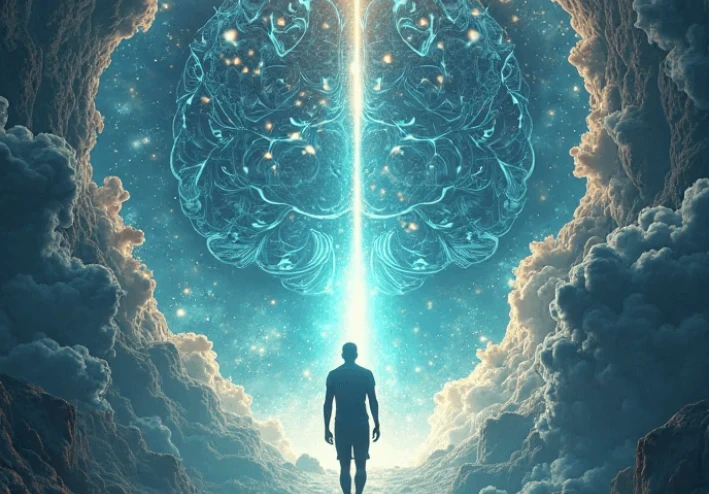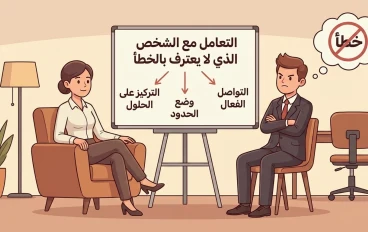
Beyond Death: Reality Consciousness and Metaphysics
Beyond Death: Reality Consciousness and Metaphysics
I set out to explore the deep link between consciousness and the mysteries beyond death. The idea of a parallel universe and its link to metaphysics opens new ways to understand human existence.
Our journey into the unknown reveals the vast scope of human consciousness. It shows how we can go beyond the limits of death. This journey through the mind and existence changes how we see the world and our place in it.
The Nature of Consciousness and Its Relationship to Physical Reality
The bond between consciousness and physical reality fascinates both philosophers and scientists. Consciousness, at the heart of our being, shapes how we see the world. It's the canvas on which our experiences are painted, shaping our view of existence.
Defining Consciousness Beyond Traditional Science
Consciousness goes beyond what science traditionally studies, entering philosophical and spiritual realms. It includes our personal experiences, like thoughts and feelings. To truly understand consciousness, we must see its wide range. It's not just in our brains but is a key part of who we are.
How Our Thoughts Shape Our Experience of Reality
Our thoughts greatly influence our reality. How we think about the world shapes our perceptions, creating a unique reality for each of us. This shows the deep connection between our inner thoughts and the world around us.
Practical Exercises to Observe Your Consciousness in Action
Practical exercises can help us better understand consciousness. Simple mindfulness practices, like meditation and deep breathing, increase our awareness. By watching our thoughts and feelings without judgment, we gain a deeper appreciation for consciousness's dynamic nature.
Mindfulness meditation is a great exercise. Spend a few minutes each day sitting, eyes closed, focusing on your breath. If your mind wanders, gently bring it back to your breathing. This practice shows how thoughts and feelings shape our reality perception.
Understanding Death from Scientific and Metaphysical Perspectives
Looking at death requires a dual approach: biological and metaphysical. This universal experience has been studied through many lenses, from medical to philosophical. Each view adds to a full understanding.
The Biological Definition of Death and Its Limitations
From a biological standpoint, death marks the end of vital functions. These include the ability to respond, breathe, and circulate blood. Yet, this definition misses the personal dying experience and the possibility of consciousness beyond physical death.
The biological view is crucial for medical and legal purposes. But it may not fully capture the personal experience of death. Here, metaphysical views are key.
Metaphysical Interpretations of the Death Experience
Views on death vary across cultures and beliefs. Many believe in an afterlife or ongoing consciousness. These ideas are rooted in spirituality, suggesting life goes beyond the physical.
These beliefs are supported by near-death experiences (NDEs) and other phenomena. They challenge the idea that death is just the end of life.
How to Reconcile Scientific and Spiritual Views of Death
To blend scientific and spiritual views on death, we need to be open-minded. We must combine scientific facts with personal, spiritual experiences. This approach helps us understand death better.
This understanding makes death a transition, not an end. It encourages acceptance and curiosity. Death is seen as a move to another state of being or consciousness.
Theories of Consciousness After Death
For centuries, people have wondered what happens to our consciousness after death. This curiosity has led to many theories and interpretations. These views offer deep insights into the human experience.
Near-Death Experiences: Evidence and Analysis
Near-death experiences (NDEs) challenge our understanding of death and consciousness. They are marked by peace, joy, and feeling detached from the body. Research on NDEs has found common elements, such as:
A sense of being out of the body
Traveling through a tunnel or dark space
Encountering deceased loved ones or spiritual beings
Experiencing a life review
These experiences, though personal, provide valuable insights into the possibility of consciousness beyond death.
Cultural and Religious Interpretations of the Afterlife
Different cultures and religions have their own views on the afterlife. For example:
"In many Eastern traditions, the concept of reincarnation suggests that consciousness is reborn into a new body, influenced by karma from past lives."
Religious beliefs also vary, from heaven and hell to spiritual liberation. These beliefs shape how people see death and the afterlife, influencing their experiences and understanding of consciousness.
Techniques for Processing Fear of Death
Dealing with the fear of death is a personal journey. Mindfulness and meditation can help accept mortality, reducing fear. Exploring beliefs about the afterlife through journaling or therapy can also bring peace.
By using these practices, people can develop a more compassionate view of death. This improves their appreciation for life and its mysteries.
The Concept of Parallel Universes in Modern Physics
Exploring parallel universes offers new insights into existence. The idea that our reality is just one of many changes how we see the universe and our place in it.
Quantum Mechanics and the Multiverse Theory Explained
Quantum mechanics suggests the multiverse hypothesis, where each quantum event creates a new universe. This idea challenges our traditional views of reality, making us think about parallel universes.
The multiverse theory is supported by quantum mechanics interpretations, like the Many-Worlds Interpretation. This theory says that with each quantum event, the universe splits into multiple parallel universes, each with a different outcome.
"The Many-Worlds Interpretation is a natural consequence of applying quantum mechanics to the universe as a whole." -
Max Tegmark
How to Conceptualize Multiple Dimensions of Reality
Adapting to the idea of multiple dimensions requires a big change in how we see things. Our usual three-dimensional view is challenged by physics. It suggests there are many more dimensions out there.
Thought Experiments to Understand Parallel Existence
Thought experiments are great for getting our heads around parallel universes. Think about a coin flip. In our world, it lands on heads or tails. But, the multiverse theory says it lands on both in different universes.
Doing these thought experiments helps us understand parallel universes better. It also makes us want to learn more about reality itself.
Time Distortion: How Our Perception of Time Changes
Time distortion is something we all experience. Our personal time can feel very different from the real time passing. This is because of many factors, like our focus, feelings, and memory.
Psychological Factors Affecting Time Perception
Our sense of time changes based on our mood. Time flies when we're doing something fun, a feeling called "flow." But, time seems to slow down when we're stressed or scared.
Our focus is key to how we see time. When we're really into something, our brain works faster. This makes time seem to pass quicker. Our feelings also affect time. Fear, excitement, or boredom can make time feel different.
Exercises to Experience Subjective Time Dilation
Here are some ways to feel time dilation:
Meditation: Focus on your breath to slow down your internal clock.
Flow activities: Engage in tasks that fully absorb your attention.
Time estimation: Guess the amount of time that has passed without checking a clock.
Using Time Distortion for Enhanced Creativity and Problem-Solving
Time distortion can boost our creativity and problem-solving skills. By changing how we see time, we can enter different states of mind. This helps us think more innovatively.
Understanding and changing our time perception can unlock new creativity and productivity. As we explore time distortion, we open up to new ways of experiencing reality.
Consciousness, Death, Parallel Universe, Metaphysics, Time Distortion, and Perception: The Complete Interconnection
Looking into the connections between consciousness, death, and metaphysical ideas gives us deep insights into life.
The ideas from earlier sections are all connected. Consciousness, the heart of our being, ties together our views on death and the possibility of life beyond our physical world.
Mapping the Relationships Between These Phenomena
To understand these connections, we need to map out the links between consciousness, parallel universes, and time distortion. We must look at how consciousness affects our time perception. This perception changes in different states, like near-death experiences or when we're in altered consciousness.
The role of consciousness in shaping our reality
The impact of metaphysical interpretations on our understanding of death
The relationship between time distortion and consciousness
How to Recognize Patterns Across Different States of Being
Recognizing patterns in different states of being needs us to be more aware of our mind. Mindfulness helps us see what's common and what's different. This shows us what existence is like.
Meditation and lucid dreaming help us understand our mind's flow. They show us how our mind relates to time distortion and parallel universes.
Developing a Personal Framework for Understanding Existence
Building a personal framework means mixing insights from our mind, death, and the unknown. It's unique, shaped by our experiences, beliefs, and openness to the unknown.
By combining these insights, we get a deeper understanding of existence. This understanding accepts the mysteries and complexities around us.
Techniques for Expanding Consciousness Beyond Physical Limitations
Expanding our consciousness beyond our body is a deep journey. It requires using different methods to go beyond our limits. These ways help us explore deeper aspects of existence and spirituality.
Step-by-Step Guide to Transcendental Meditation
Transcendental meditation is a strong way to grow our consciousness. It uses a mantra to calm the mind, leading to a deeper state of awareness.
Find a quiet, comfortable place to sit.
Close your eyes and take a few deep breaths.
Begin to repeat your mantra silently.
Allow your mind to settle, letting go of thoughts.
Practice for 20 minutes, twice a day.
Advanced Breathwork Protocols for Altered States
Breathwork changes our consciousness. By controlling our breathing, we can change our mental and emotional states.
Using Sound and Vibration to Shift Consciousness: A Practical Guide
Sound and vibration affect our consciousness. Sound healing and singing bowls can change our state of being.
To practice sound healing, start by picking a sound or instrument that feels right to you. Then, follow these steps:
1. Find a quiet space where you can sit comfortably.
2. Close your eyes and take a few deep breaths.
3. Begin to play the sound or instrument.
4. Allow the vibrations to envelop you, letting go of any tension.
5. Remain in this state for as long as you feel necessary.
Using these techniques daily can grow our consciousness. It deepens our understanding of existence and boosts our spirituality and connection to reality.
Navigating the Threshold Between Life and Death States
The shift from life to death is a deep experience. It can be better understood through specific practices. As we cross this threshold, we meet different states of consciousness. These states give us insights into existence's nature.
Developing Lucid Dreaming Abilities
Lucid dreaming is a powerful tool for exploring life and death's boundary. By knowing we're dreaming, we can see the fluid boundaries between states of consciousness. To get better at lucid dreaming, start by keeping a dream journal to record and analyze your dreams.
Regular reality checking during the day helps too. It makes us question reality, which can carry over into dreams. Techniques like MILD (Mnemonic Induction of Lucid Dreams) and WBTB (Wake-Back-To-Bed) can help induce lucid dreaming.
Safely Exploring the Hypnagogic State
The hypnagogic state is the time between being awake and falling asleep. It's a chance to explore the edge between different states of mind. To explore it safely, start by relaxing and ignoring distractions.
Focus on your breath or a mantra to stay aware as you drift off. It's important to be patient and open-minded. The hypnagogic state is full of images and insights.
Interpreting Threshold Experiences
Experiences at the edge of life and death are deep and hard to understand. To make sense of them, look at the symbolic language of our subconscious and the personal meaning of the experience.
By looking at these experiences through a personal and symbolic view, we can learn more about our own views on death and consciousness.
Developing Awareness of Multiple Dimensions
There's a scientific concept of multiple dimensions that invites exploration through practical knowledge. We can't advance in awareness and metaphysics without exploring these parallel and interactive realms.
Epilogue: The Infinite Journey of Consciousness
This journey began at a point that shattered my very being: standing at the precipice of death. Not merely an abstract philosophical notion, but a visceral psychophysical experience where my certainties trembled like a house in a storm.
Colors and sounds dissolved into all-encompassing silence and a blinding light. That precipice, in all its terror and majesty, became my first threshold into the expanded consciousness I sought to explore.
From there, the path was not linear toward "healing" or "forgetting," but a vertical ascent into depths and heights. My perception expanded to seek meaning for that experience within a grander context: the cosmos itself.
Curiously enough, I immersed myself in modern physics, where quantum theory describes an incredible strangeness: particles entangled across vast distances, their wave/particle duality, and perhaps consciousness’s role in "wave function collapse." I mused: Is this strangeness an echo of my encounter at existence’s edge?
Be that as it may, the vista widened further into cosmology: the universe’s accelerating expansion, mysterious dark energy, dark matter constituting most cosmic mass yet remaining unseen, and string theory’s multiverses challenging our perception of a singular reality.
I contemplated human consciousness itself—this flame of awareness emerging from intricate neural arrangements. How does this unique consciousness I experienced at oblivion’s brink align with a universe so ancient, vast, and seemingly cold?
Ultimately, the journey bridged my most intimate subjectivity—the imminence of death—with the most abstract objectivity: cosmic mysteries. It transformed into an odyssey from personal abyss to the frontiers of universal knowledge, seeking threads between fragile individual existence and the cosmic tapestry. I grasped that the boundary between "inner" (my consciousness) and "outer" (the cosmos) may be far more porous than we imagined.
To you, reader, at this written journey’s end, I pose a question: What might it stir within you? I seek not to impart my answers, but to ignite your own spark of inquiry. Death is no dark taboo to evade—it is a luminous horizon defining life’s meaning.
Approach it not with trembling fear, but with courageous contemplation. Ask yourself: What does my death signify to me? How does acknowledging my finitude shape today’s choices? Envision yourself at that precipice—not to invoke dread, but to surface your deepest values: regrets, yearnings, authentic truths.
Here lies the true summons:
Wield death as a mirror revealing life’s essence. If this fleeting conscious moment is your sole certainty in an infinite cosmos, how will you inhabit it? Will you squander it on trivial strife or build bridges of compassion?
Fill it with future anxieties or nostalgic pasts—or dwell wholly in the "now," the only possession you truly hold? Will you barricade yourself behind walls of certainty or embrace the surrounding mystery?
Do not await death’s precipice to compel clarity. Begin the journey now. Explore science, meditate on philosophy, heed ancient wisdom—but above all, attend to your inner voice. Pose life’s profound questions and let them reshape your priorities. Transmute fear of endings into vitality for living. Let wonder nourish you where mystery once intimidated.
In accepting our limits and finitude, we may uncover profound freedom: to live with courage, depth, and love—here and now, facing the infinite. Such is consciousness’s journey: endless, beginning and ending with one question: How do we truly live before we depart?





































